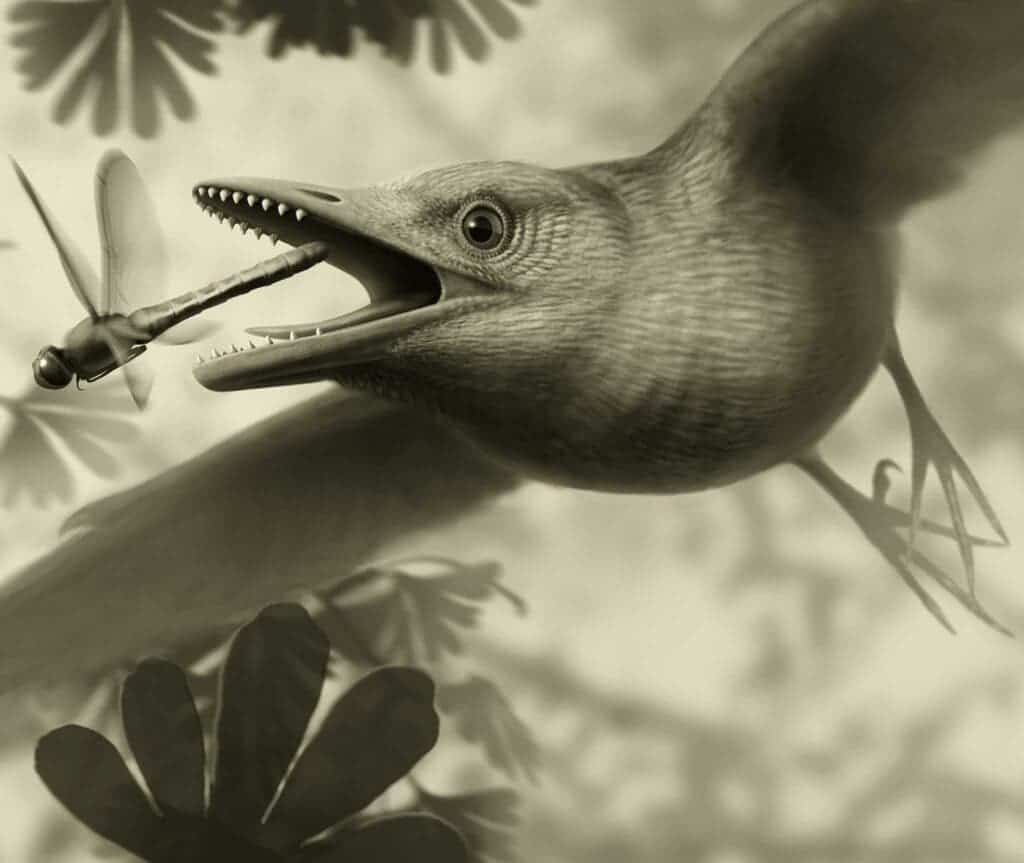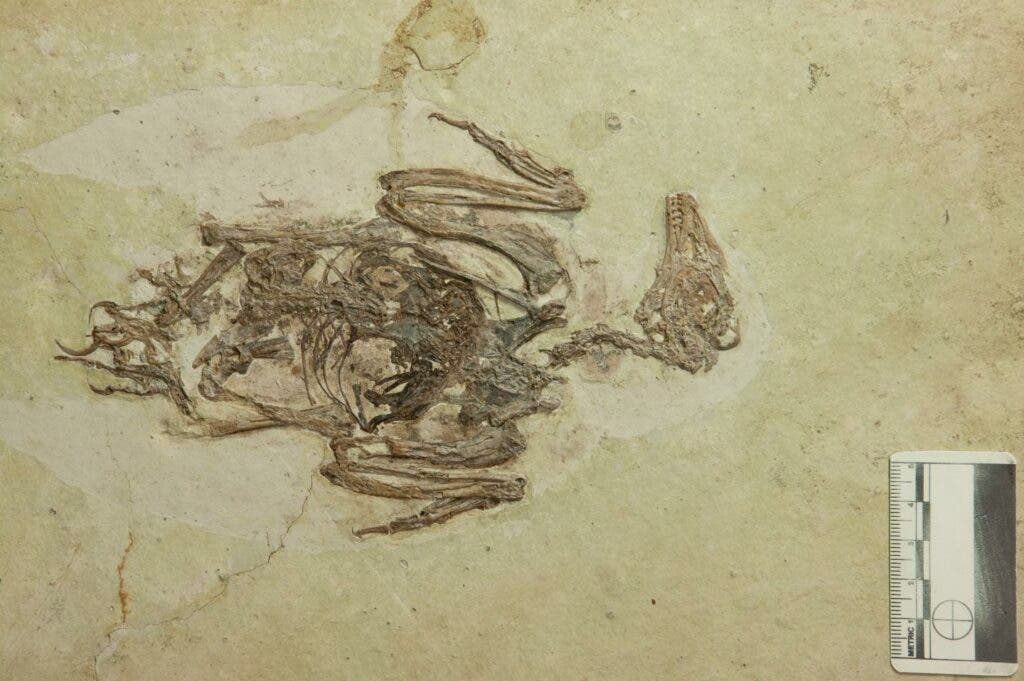Figuring out the lifestyle of animals can be difficult even for today’s creatures — but for those that lived over 100 million years ago, it’s a massive challenge. But sometimes, researchers get lucky and find unusual fossils that shed new light on these ancient creatures.

A real mystery
The finding in case is a quartz-like mineral called chalcedony which was found in the stomach of a bird that lived way before T. Rex, when birds were still in their early evolutionary history. The bird is called Bohaiornis guoi.
“They’re part of an early lineage of birds from the Cretaceous, about 120 million years ago,” says Jingmai O’Connor, one of the study authors. “They still retain teeth and claws on their hands, but they’re small, about the size of a pigeon, so they’re not particularly terrifying.”
The bird was part of a group called the enantiornithines that were once the world’s most common birds, with thousands of its fossilized relatives being found in northeastern China. But although many fossils of the group have been found, none contained much information about what it would have eaten, until 2014. In 2014, a study found several rock-like structures within the creature’s abdominal cavity –and it seemed like the problem was solved.
Many living birds swallow small rocks (called gizzard stones or rangle stones) which are used to help crush up tough food. These stones, also called gastroliths, have been found in several dinosaur and bird fossils, suggesting that they consumed tough plant materials and seeds. If Bohaiornis guoi also had these gizzard stones then we have a clue what it ate, and this is what the evidence seemed to suggest at first glance.
But in a new study, O’Connor and her former Masters student Shumin Liu found that this is not likely the case.
“Based on the evidence gleaned from numerous lines of analysis, the best hypothesis for how the chalcedony got there is that it formed post-mortem, at some time during the fossilization of the specimen,” O’Connor tells ZME Science.
“Since the chalcedony forms a large, interconnected thin plate-like structure, its highly unlikely the bird would have swallowed it (it would be like swallowing a plate). Stones intentionally ingested by birds are never thin because then they would break easily and not serve their function.”
Liu and O’Connor also sampled stones from other birds and one dinosaur that are undoubtedly gizzard stones, comparing their morphology to what was found inside Bohaiornis guoi — they found no similarity.
“The size of the traces in Bohaiornis are too small to be considered rangle or gizzard stones, and they are brown – the same color as the bone, whereas ingested stones found in other birds are usually black, grey, white-ish. All in all, they are nothing like ingested stones in other birds,” O’Connor tells me in an email.
The chalcedony crystals that were found inside the fossil are sometimes found with fossils, and they have been documented as forming in the fossilization process.
“This it makes it more like the chalcedony formed during diagenesis (the process of the sediment and carcass becoming fossil and rock),” O’Connor adds.

Where does this leave us
The first takeaway is that we still don’t know what these primeval birds ate — but we’re getting closer and closer to figuring out.
“This paper tells us that the Enantiornithes, one important clade of fossil birds, still have no direct stomach traces or evidence,” says Shumin Liu, currently a student at the Institute of Vertebrate Paleontology and Paleoanthropology, Chinese Academy of Sciences, and the paper’s first author. “I was excited, it is a breakthrough about them.”
But if we look at the larger picture, something still stands out: out of the many fossils, no evidence of gizzard stones has been found. To O’Connor, that suggests that they didn’t have gizzard stones at all.
“We just have this absence of evidence, and paleontologists always say absence of evidence is not evidence of absence. But I always counter with, whoever came up with that adage never imagined having thousands of specimens that are complete and articulated, some preserving soft tissue,” says O’Connor. If Early Cretaceous enantiornithines did employ gastroliths, it’s awfully strange that none of the thousands of fossils show them.
“The absence of gastroliths must mean they ate things that did not require gizzard stones to aid in digestion (soft things like larvae or fruit), or that the enantiornithine digestive system was fundamentally different and did not rely on gizzard stones (there are arguments about whether gizzard stones are actually necessary or not in living birds).”
This is often the problem in paleontology: you’re often at the mercy of fossils. Even when the evidence seems tantalizingly close, it’s hard to conclusively demonstrate something. So at this stage, things are not clear. It’s still a mystery, O’Connor concludes.
“Either way, it’s weird because so many other birds and closely related dinosaurs use gizzard stones so enantiornithines should have had the genetic potential to evolve a grinding gizzard. Of course, not all use gizzard stones, it depends on diet. But enantiornithines are also the most diverse group of Cretaceous birds so it’s odd this entire radiation of birds would eat only soft things that would not benefit from the aid of gastroliths for digestion. Neither explanation is satisfactory, it really is a mystery.”
The study was published in the journal Frontiers in Earth Science.









